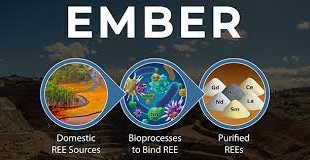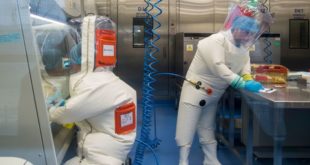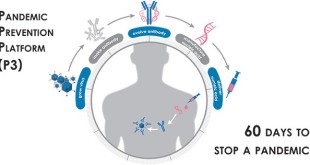Various techniques used in biophotonics have been developed in an industrial or military setting before migrating to medicine and the life sciences. This is one reason why many techniques and applications used in biophotonics are open for dual use, i.e. can in principle be used for both civilian and military …
Read More »DARPA EMBER employing Microbes for bioproduction of Rare Earth Elements (REEs)
REEs are a series of chemical elements found in the Earth’s crust that are essential components of many technologies, including electronics, computer and communication systems, transportation, health care, and national defense. Rare Earths Elements (REE) are incorporated into many sophisticated technologies with both commercial and defense applications including smartphones and flatscreen …
Read More »Threat of Biological warfare, Bioterrorism and Bio accidents requires comprehensive Biodefense strategy
Naturally occurring threats such as influenza, Ebola, and Chikungunya are bypassing borders to emerge in nations oceans away, and exact a continued toll. The Pandemic and highly pathogenic influenzas challenge the globe every year and result in the loss of thousands of human and frequently millions of animal lives, respectively. …
Read More »Space based CRISPR gene-editing to protect astronauts from radiation damage of Deep-space missionss
Deep-space and long-duration missions, where both crew members and spacecraft no longer benefit from the protection of Earth’s magnetic fields, are considered high risk for adverse radiation impacts. Aircraft flying at altitude, at about 30,000 feet and above, also are starting to experience radiation-induced effects. “There are 500 times more …
Read More »DARPA WASH built Smartphone App for continuous assessment of Warfighter readiness and predict Illness or Injury
Around the world, armies are recognizing the importance of maximizing the effectiveness of Soldiers physically, perceptually, and cognitively. Militaries are therefore studying effects of frustration, mental workload, stress, fear and fatigue on both cognitive and physical performance. Early detection of illness and injury often yields a better prognosis. For …
Read More »DARPA P3 developing rapid medical countermeasures to pandemics including COVID-19 or corona virus to support military readiness and global stability
Pandemics may threaten both internal and external national security – the physical threat to U.S. citizens in terms of morbidity and mortality, and the decreased effectiveness of U.S. armed forces in protecting those citizens from external threats. The economic, political or social turmoil in adversary country is also potential threat. …
Read More »Air medical services and Air Ambulances
Air medical services is a comprehensive term covering the use of air transportation, aeroplane or helicopter, to move patients to and from healthcare facilities and accident scenes. An air ambulance is often required to provide urgent evacuation from a remote or medically under-served area to a more suitable, higher-level medical …
Read More »Bio-Inspired Micro Air Vehicle for better flight performance, controlability and endurance
UAVs are Aircrafts that are piloted remotely by some person who is at a different place. These UAVs of various sizes and shapes can fly continuously for more than 24 hours and some of them can only fly for less than 30 minutes. Some UAVs have wings of several meters …
Read More »Countries advance bioeconomic strategies
The world faces the challenge of responding to not only the new issues emerging from COVID-19 but also those related to climate change and rising restrictions on natural resources, while sustainably meeting a growing demand for energy and food. These are intimately involved with the need to control climate change …
Read More »Quantum Brain sensors
Quantum sensors are measuring device that takes advantage of quantum correlations, such as states in a quantum superposition or entanglement, for better sensitivity and resolution than can be obtained by classical systems. QP will boost the capabilities of all sorts of sensory devices, such as gravimeters, which are used to …
Read More » International Defense Security & Technology Your trusted Source for News, Research and Analysis
International Defense Security & Technology Your trusted Source for News, Research and Analysis








